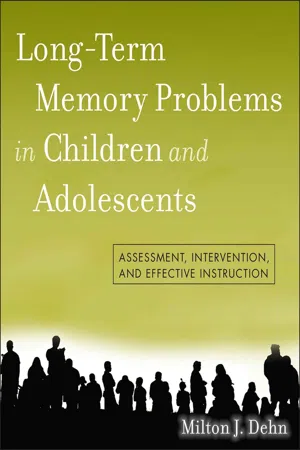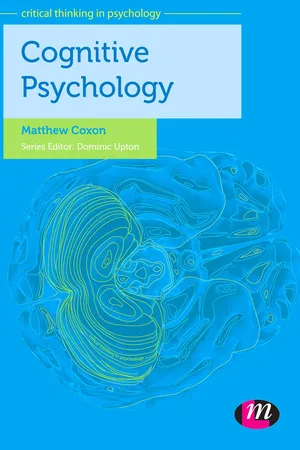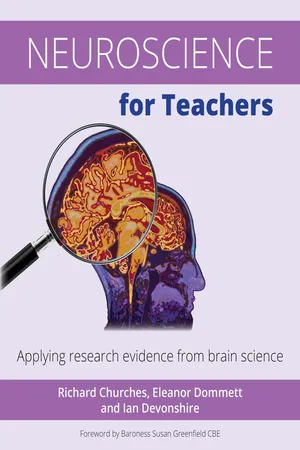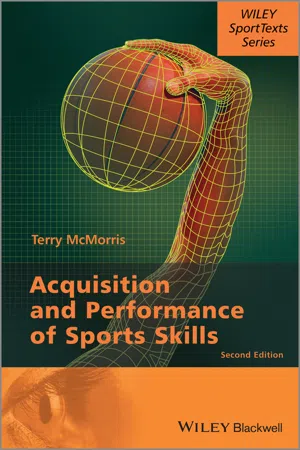Psychology
Structures of Memory
"Structures of Memory" refer to the organization and storage of information in the human memory system. This concept encompasses the various components and processes involved in encoding, storing, and retrieving memories, including sensory memory, short-term memory, and long-term memory. Understanding the structures of memory is essential for comprehending how information is processed and retained in the mind.
Written by Perlego with AI-assistance
Related key terms
9 Key excerpts on "Structures of Memory"
- eBook - ePub
Long-Term Memory Problems in Children and Adolescents
Assessment, Intervention, and Effective Instruction
- Milton J. Dehn(Author)
- 2010(Publication Date)
- Wiley(Publisher)
Human memory systems have different functions and handle distinct types of information. Not only do separate memory systems deal with distinct kinds of information, but they operate according to different principles and rely on different neural structures and processes (Tulving, 1993). Nonetheless, each cognitive event or learning experience draws on a unique combination of components from one or more memory systems. That is, there is seldom a one-to-one correspondence between the information being encoded and a particular memory system. However, memory systems can operate independently of one another. For instance, an individual who appears to have total amnesia for explicit forms of memory can still learn and remember through the implicit (unconscious) memory system. Despite the diversity of storage systems, a common set of cognitive processes enables much of the encoding, storage, and retrieval of information.The purpose of this chapter is to help readers begin to unravel the complexities and mysteries of human memory and to gain an understanding of how all the pieces and processes work in unison. The chapter will begin by discriminating among short-term, working, and long-term memory, and by examining the components of each. The discussion will then focus on the divisions of long-term memory, with emphasis on the types of memory most closely related to academic learning. Details on all of the memory processing from input to output will then be provided, along with a discussion of forgetting and some cognitive theories of memory organization. By the end of the chapter the reader should have a grasp of memory fundamentals and begin to foresee assessment possibilities and educational implications. This chapter focuses on cognitive models of memory, whereas Chapter 3 describes memory functions from a neurological perspective.THE FLOW OF INFORMATION
Memory has been investigated since the early days of psychology (Ebbinghaus, 1913), but only in recent decades have psychologists reached a consensus about its structures and functions. There was even uncertainty over the division of memory into short-term and long-term components until early neuropsychological studies in the 1940s confirmed the distinction. Building on this finding, cognitive models of memory and information processing originated in the 1950s and evolved into the elaborate multi-component models that are now supported by neuroscientists’ brain imaging research. It is difficult to represent complex human memory structures and functions in a figure, and consequently the general information processing model has been criticized as being overly simplified. Nonetheless, the classic model (see Figure 2.1 - eBook - ePub
- John Henderson(Author)
- 2005(Publication Date)
- Routledge(Publisher)
Part II The Structure and Processes of Human Memory Pure AspectsPassage contains an image
2 How do we study memory?
DOI: 10.4324/9780203977651-2Approaches to the study of memory
There is no doubting the fact that our ability to remember information is an integral part of our lives. Even when we are not striving to remember a particular event, a person’s name, a fact for an examination or whatever, our day-to-day lives rely on constantly referring to our past and linking it to our present and our future. Whilst simply engaging in a conversation with a friend, we are required to produce and comprehend language at high speeds. For this we must access words, ideas and experiences from our memories and shape them into a series of sentences using a structure and grammar that is also represented in our permanent memories.Yet we do all this so effortlessly! The processes involved in accessing memories happen in an instant, and usually without our conscious awareness of them. This makes the scientific study of such processes highly problematical. Under everyday conditions we can merely speculate about how memories really work, and this is a frustration that is shared by those who theorise in all areas of cognitive psychology—thinking, perception, language and attention.Over the years, however, cognitive psychologists have made the best of the situation. Typically, they have adopted one of three general approaches to study, although sometimes these approaches have overlapped. They are, however, discussed individually.Computer approaches
A rapidly expanding area in which psychologists are developing expertise is called cognitive science - eBook - ePub
- Matthew Coxon(Author)
- 2012(Publication Date)
- Learning Matters(Publisher)
Research on learning and memory has been a particularly fruitful area, with lots of time and money spent on it. We can only guess why, but it is possible that part of this popularity comes from how easy it is to test learning and memory both inside a laboratory and outside in the real world. A simple memory test can be put together with a list of words and people who agree to take part. Experiments can be easily made in which the influence of many different things can be explored (e.g. type of words on the test, size of the test, delay before remembering them, how it is presented). The result is that lots of different exciting aspects of human memory have been studied, described and predicted. While there are many different accounts, cognitive psychologists can be broadly classified as adopting one of two approaches:- a structural approach;
- a processing approach.
Structural Approaches
A structural approach to understanding the psychology of memory is one that focuses on identifying different types of memory and working out the relationships between them. The main assumption with much of this work is that memory is not one thing but a combination of different ‘types’ of memory. A few examples should make this clear.Atkinson and Shiffrin (1968) developed a model of memory that argued for a sequence of three different types of memory, also called mental stores. They argued that memory had a specific structure that consisted of both stores and processes that were ‘fixed’. They also argued that there were a number of processes that were more flexible than these stores that participants could use at will to influence their own memories (such as mentally rehearsing information). Most attention has been paid to the three separate stores they proposed, which were: a sensory register; a short-term store; and a long-term store. Indeed, you may already be familiar with the terms ‘short-term memory’ and ‘long-term memory’ from everyday use. - eBook - ePub
Cognitive Psychology and Information Processing
An Introduction
- R. Lachman, J. L. Lachman, E. C. Butterfield(Authors)
- 2015(Publication Date)
- Psychology Press(Publisher)
Structural features can be theoretically valid and useful whether or not distinct anatomical or physiological correlates are found for them. Such evidence would, of course, be powerful support; however, knowledge of how brain physiology relates to behavior is still minimal. It may be a long time before the science of neurophysiology supplies much usable information to psychologists. Instead, the most common method of studying structural features is to attempt to identify memory functions that operate similarly across many apparently different situations. Control processes are more likely to be studied by showing that they are used differently by different people or that they operate uniquely in particular contexts.II. Three Memory Stores
According to Atkinson and Shiffrin, the basic structural features of episodic memory are three memory stores, which they call the sensory register, the short-term store, and the long-term store. These stores are said to be structurally distinct because they preserve information in different formats, for different durations, and for different purposes, and because they lose information in different ways. In principle, they may also be distinguished on anatomical grounds. The purpose of this chapter is to describe the experimental findings that justify and test these assertions. It is to show why the three-store model was accepted in the first place, and to prepare the way for explaining why many scientists have recently questioned Atkinson and Shiffrin's three-store theory. This latter purpose is pursued in the next chapter.In Chapter 4 we showed a flowchart of Atkinson and Shiffrin's model (Fig. 4.4 ). It included a response generation system and control processes, as well as the three memory stores. Here, we are concerned only with the three stores, and they are represented more completely in Fig. 7.1 than they were in Fig. 4.4 .A. The Sensory Register
Figure 7.1 indicates that external information enters the memory system through the various senses, and that it goes first to the sensory register, which we define below. You can see in Fig. 7.1 - eBook - ePub
The Cerebral Computer
An Introduction To the Computational Structure of the Human Brain
- Robert J. Baron(Author)
- 2013(Publication Date)
- Psychology Press(Publisher)
I will not discuss the numerous psychological theories and data that memory researchers have amassed, though I have included a list of suggested readings at the end of the chapter. To explain those data (including item data: thresholds, strengths, attributes; association data: forgetting functions, confidence judgments, repetition effects, symmetry; serial order: retroactive and proactive inhibition, distinctiveness, item order, capacity limitations, chunking; recall: forgetting, cuing effects, part-to-whole transfer; the affect on recognition and recall of meaningful-versus-nonsense data, serial position, etc.) would require a detailed model not only for the various storage systems, their control systems, and the relationships between them, but also for the affect system and the purposive systems (which I will introduce later). Since, at the present time, we are not even close to such an understanding, I have restricted my coverage in this chapter to those aspects of brain function which I feel give the greatest insight into the functioning of the memory stores and their control systems at the neural level.Roughly speaking, the human memory stores can be divided into several different classes, depending on the permanence of the memory trace. Sensory buffers hold sensory inputs for a short period of time (up to a few seconds) and are necessary for the initial encoding of sensory data. Temporary memory stores hold information for much longer periods of time—perhaps an hour—but then lose their information suddenly, and permanent memory stores hold information indefinitely. Memory stores can be divided into classes based on the mechanism of trace consolidation. Some memory stores require a single presentation of information to form a trace while other stores require repeated presentations. Memory stores can be grouped according to information modality. Some stores hold sensory patterns or transformed sensory patterns, some stores hold similarity patterns or processed similarity patterns, some hold control patterns which are used to control mental activities, and some hold internally generated motor patterns which control the muscles. Finally, for each memory store, the activation of memory locations is a form of temporary storage which must be considered apart from the stored information itself. The access mechanisms for a memory store determine what can be recalled and when. They must therefore be carefully considered in any discussion of human memory. - eBook - ePub
Cognition
From Memory to Creativity
- Robert W. Weisberg, Lauretta M. Reeves(Authors)
- 2013(Publication Date)
- Wiley(Publisher)
working memory (Baddeley, 1986, 2000). Baddeley's analysis of working memory will illustrate a modern preference for considering the functions and processes (rather than the structures) involved in memory. The second half of the chapter examines long-term store, and considers how memories for facts, personal events, and new skills might be stored and organized. Throughout, we will discuss neuropsychological data from brain-recording techniques and brain-damaged patients to determine which brain areas control memory functions.A Functional Account of Memory
What would happen if we had not evolved any mechanisms for storing information? Life would always be novel and exciting, but few of us would survive to adulthood. Parents would fail to care for their children, because parent–child attachment would be forgotten. We would walk out in front of cars, not remembering that we had been told of the dangers of doing so. And imagine our primitive ancestors trying to forage for food; not only would they forget the location where trees had had plentiful fruit last week, but they would be tempted to eat the same red berries that had made them feel sick the week before (having forgotten the dire consequences). In contemporary times, finding food at the grocery store would prove an impossible task. Assuming that we stumbled upon grocery stores as a source of food, it would take us hours to find things we wanted to eat (especially since we would be unable to recall what foods we did like), and then, if we ever reached the point of paying for our purchases, we would not know how to do it (because memory for the basic rules of addition and subtraction would be lost to us).When we casually talk of memory, we use a single word, which can lead one to believe that memory is one thing—one capacity, one structure, or one set of processes (Baddeley, 1990). If we dig deeper, however, we uncover many different kinds of information that can be called memories, and many different activities that can be called remembering. The functions served by memory can by divided into two general classes. First, memory provides the basis for our adaptation to the environment. To do so, it must store a reasonably accurate record of our experiences, and this information must be available as it is needed. Memory also serves as a work-space - eBook - ePub
Human Memory
Structures and Images
- Mary B. Howes(Author)
- 2006(Publication Date)
- SAGE Publications, Inc(Publisher)
New declarative memories are processed in the medial temporal lobes of the brain, where the hippocampus plays a critical role. Another region involved in the processing of new declarative memories is the diencephalon. Damage of either of these areas normally produces amnesia. These structures do not appear to be critical to the recollection of memories that have been stored for a long period of time, however. Perceptual information is stored in the regions of the brain that process the original perceptual input.Neuroimaging studies have shown that the hippocampus and the prefrontal brain regions become active during memory formation and retrieval. With word stimuli, the left prefrontal region appears to be most highly activated at encoding, and the right prefrontal region, during retrieval. With autobiographical material, the opposite pattern of activation has been found, except in the case of highly emotional content, where the pattern of activation again favored most activity in the right hemisphere during retrieval. The data indicate that neither hemisphere is specialized uniquely for either encoding or retrieval.The locus of activity of the brain during retrieval of word items also depends on whether a shallow- or a deep-processing task was used during learning. Also, there are differences in areas of activation depending on whether attempted recall is successful or not.A recurring finding based on neuroimaging studies is that the same task may be handled by different areas of the brain at different times (as measured by different studies). The amygdala appears to mediate the influence of emotion on memory, rather than be a processing structure involved in the retention of memory content as such.It has been established that chemicals can affect memory, either by strengthening the memory function or by impairing it. The data can be interpreted within the frame of a consolidation model. Consolidation also provides an alternative to traditional interference theory. Within physiological psychology it is believed that there are many different processing stages that follow the traditional moment of entry into LTM. There is a stage of very strong retention directly following learning or encoding, followed by the retention of certain kinds of information, and the loss of detail, over longer periods of time. It is likely that different regions of the brain are involved in these processes. - eBook - ePub
Neuroscience for Teachers
Applying research evidence from brain science
- Richard Churches, Eleanor Dommett, Ian Devonshire(Authors)
- 2017(Publication Date)
- Crown House Publishing(Publisher)
Each of these stages is necessary but not sufficient in order for the next stage to be effective. For example, it is not possible for you to consolidate or store something if you did not encode it first. However, just encoding something does not mean that it will be stored. In this way, we can talk about a piece of information being available if it is stored but accessible only if you can retrieve it.At the encoding stage, the brain converts incoming information from the senses into a form that can be stored. Your brain can encode incoming information in three different ways: visually, acoustically or semantically (as meaning). To illustrate the difference, think about how you remember your school’s postcode. Do you recall it as a single visual image, are you hearing yourself saying the letters and numbers to yourself or are you doing both?Types of storage (consolidation)
It has been clear for a long time that memory has more than one facet to it. James (1890) made the distinction between what he called primary memory (information and state of mind held within conscious awareness) and secondary memory (knowledge of a former state of mind once dropped from conscious awareness). A model of memory in which there are multiple modes of storage (the ‘multistore model of memory’) was proposed by Atkinson and Shiffrin (1968, 1971), based on a number of earlier studies that helped to establish the nature of the different stores and their relationship to each other (for a discussion see Cowan, 2008).Atkinson and Shiffrin suggested that memory consists of three separate structures: a ‘sensory store’, a ‘short-term store’ and a ‘long-term store’. Today we usually refer to these as:• Sensory memory• Working memory (or short-term memory)• Long-term memoryThe term working memory has generally replaced short-term memory because it better describes what this store does. Figure 2.2 gives a summary of the model as it is often presented today and shows the way in which information passes from sensory memory to long-term memory in a linear fashion.Figure 2.2. The relationship between sensory, working and long-term memory. - eBook - ePub
- Terry McMorris(Author)
- 2014(Publication Date)
- Wiley(Publisher)
7 MemoryLearning objectives
At the end of this chapter, you should be able to:- define memory
- understand the nature of the sensory information store, short term memory and long-term memory
- understand the differences between declarative and non-declarative long-term memory
- know the brain regions involved in memory
- know the main developmental factors involved in memory.
In this chapter, we examine what, to the Information Processing theorists, is the basis of their theory, namely memory. Tulving (1985) described memory as being the ‘capacity that permits organisms to benefit from their past experiences’ (p. 385). This definition covers all types of memory: verbal, visual, emotional and motor. In this text, we are interested in verbal and visual memory, especially where they aid learning. We are, of course also, interested in motor memory. Motor memory could be described as the ability to consistently reproduce a skill over a period of time. Even ecological psychologists accept that this happens.As well as being broken down into verbal, visual and motor subgroups, memory has been divided into sensory information store, STM, LTM and working memory. We have discussed the nature and role of working memory in decision making, in Chapter 3 , so we will not spend time on it here. Suffice it to say that working memory includes inputs from both STM and LTM. That STM and LTM are different entities is not universally accepted. Evidence that there are differences between STM and LTM comes mostly from studies with individuals who have suffered some form of brain damage. Some patients have demonstrated significant negative effects on STM with no effect on LTM, while others have demonstrated the opposite.Information processing theory and short-term memory
Sensory information store
The sensory information store (SIS) holds all incoming information for a brief time. Most of the information is lost within 0.5 s. It is only retained and processed if it is attended to. The retained information is the selectively attended to stimuli. According to Atkinson and Shiffrin’s (1968) modal model of memory, if this information is to pass to STM, it must be rehearsed. I do not like the use of the word rehearsal, with regard to memory, but we will come across it again. To most people rehearsal includes a physical element. In these terms it does not necessarily, although it could do. Rehearsal really means being attended to, or processed mentally and/or physically. More recent evidence shows that not all attended to information needs to be passed to STM, some is passed directly to LTM. In fact, the ‘attention’ does not even have to be conscious, it can be undertaken at a sub-conscious level. How this occurs is examined in Chapter 8
Learn about this page
Index pages curate the most relevant extracts from our library of academic textbooks. They’ve been created using an in-house natural language model (NLM), each adding context and meaning to key research topics.








